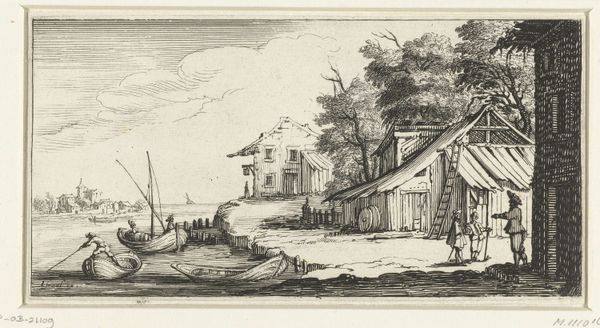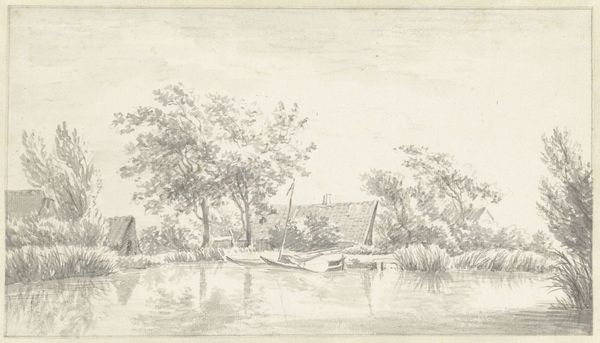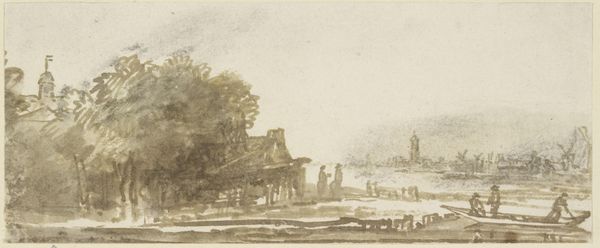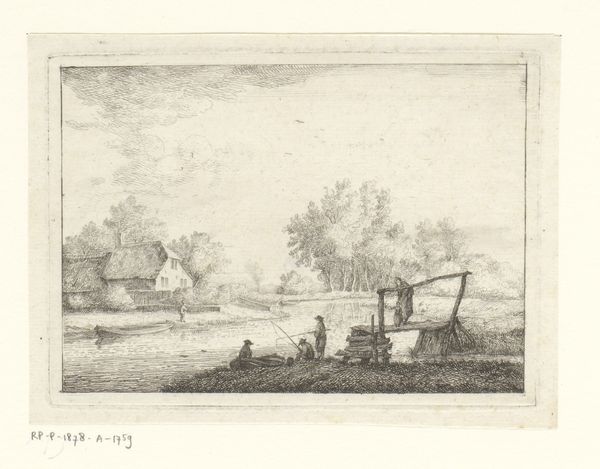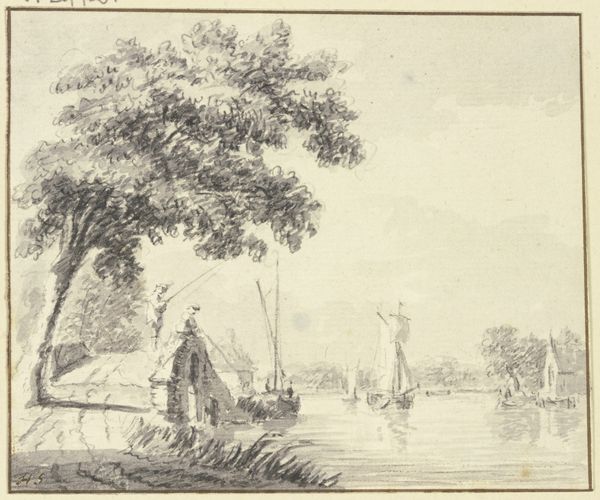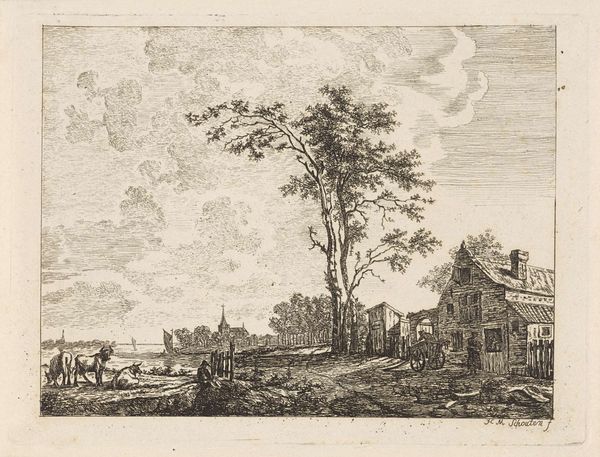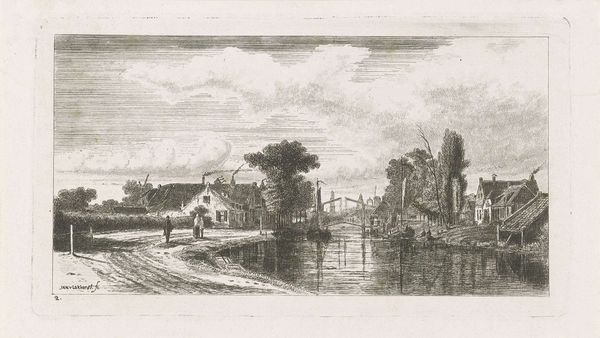
Gezicht op het Spaarne met scheepstimmerwerf en washuis bij Haarlem 1796 - 1849
0:00
0:00
albertusbrondgeest
Rijksmuseum
drawing, print, etching, ink
#
drawing
# print
#
etching
#
landscape
#
ink
Dimensions: height 176 mm, width 234 mm
Copyright: Rijks Museum: Open Domain
Curator: What a wonderfully tranquil scene. I think this etching by Albertus Brondgeest, likely created sometime between 1796 and 1849, presents us with an idyllic view of the Spaarne river near Haarlem. Editor: Tranquil is certainly one word for it. It strikes me as a study in textures – the rough thatch of the roofs, the reflections in the water, the feathery quality of the foliage. It’s almost monochromatic, save for the subtle use of light and shadow. Curator: The choice of subject here speaks volumes, doesn’t it? Brondgeest isn’t simply capturing a landscape; he's documenting the socio-economic fabric of Haarlem. The shipyard represents industry and trade, while the washhouse likely signifies the labor of women, historically relegated to domestic work. The scene brings together themes of class and gender through these architectural details. Editor: I see your point, but I'm equally drawn to the formal elements. The composition guides your eye across the scene—from the intricate foreground details to the distant horizon. The use of line is particularly masterful; look at how it defines the clouds and creates a sense of depth, all the while drawing attention to the repeating angles within the shipyard architecture itself. Curator: And what about the figures in the boats or even the ducks swimming near the shore? To me, these become stand-ins for the ordinary citizens whose livelihoods are connected to this bustling river. Brondgeest’s art here has a populist element if you consider his willingness to elevate these often-overlooked subjects. He's subtly acknowledging their contributions to the city's identity. Editor: I appreciate that context, certainly. But in addition to their roles in Brondgeest's historical portrait, the subjects contribute depth and compositional harmony. Notice the careful arrangement and varying heights that keep the eye constantly moving. To overlook the semiotics is to misunderstand the artist's craft. Curator: I find it deeply fascinating how Brondgeest has interwoven seemingly disparate aspects of 18th-century life – labor, leisure, and the natural world – into a singular, potent image that offers multiple readings from a contemporary point of view. Editor: It's true: even the mundane transforms when refracted through an artist's discerning lens, isn’t it? What strikes you now has changed my initial interpretation of the composition, offering a richer appreciation of Brondgeest's talent.
Comments
No comments
Be the first to comment and join the conversation on the ultimate creative platform.
